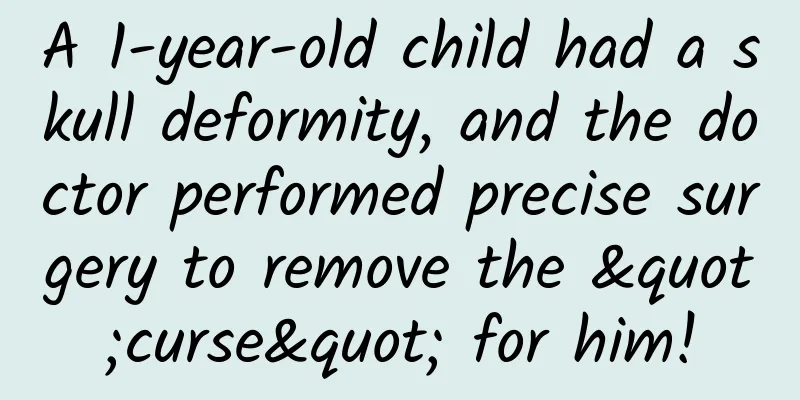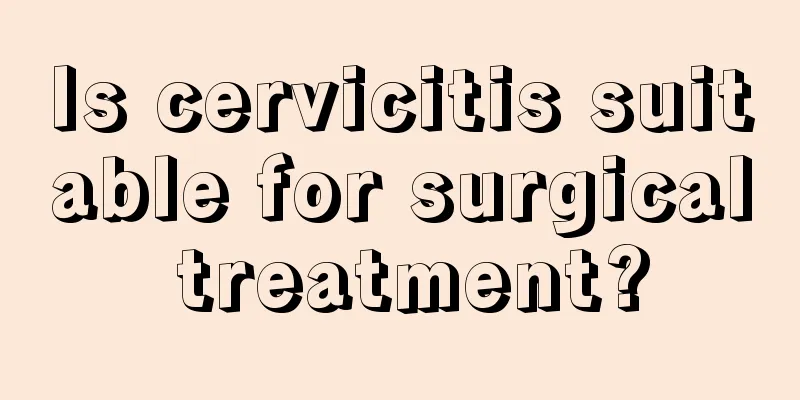A 1-year-old child had a skull deformity, and the doctor performed precise surgery to remove the "curse" for him!

|
As the baby grows, parents all hope that their child will have a round and symmetrical head shape, which is not only a reflection of beauty, but also the key to healthy growth. When Youyou (pseudonym) was born, his parents discovered that his head shape was different from other children. They took him to the local hospital for treatment, but the cause was not found. They suggested that he go home for observation and also told him to go home and "sleep well." As Youyou grew up, the abnormalities in his forehead and face became more and more obvious. His head looked like it was wearing a tight hoop, his forehead was bulging, and his eyes were bulging. Youyou had repeated examinations at the local hospital many times but still could not find the cause. After many twists and turns, his parents found out that the neurosurgery department of Hunan Children's Hospital often admitted such patients. After a face-to-face consultation with Chief Neurosurgeon Wu Shuihua , the one-and-a-half-year-old Youyou was diagnosed with craniosynostosis (sagittal suture and bilateral temporoparietal sutures). The cause of the abnormal head shape was finally found. The parents finally felt relieved and actively cooperated with the doctor's treatment. On October 12, Youyou successfully completed cranial suture reconstruction + skull reconstruction + partial temporal bone resection. During the operation, the closed cranial sutures were removed and the skull was reconstructed, leaving enough space for Youyou's brain tissue to develop. Now, on the 4th day after the operation, Youyou's head shape has improved significantly, and his parents are very satisfied. Wu Shuihua introduced that craniosynostosis, also known as craniosynostosis or craniosynostosis, is a congenital developmental disorder of the skull. Because the skull cannot grow with growth and development, it can lead to skull deformation and brain dysfunction. The main manifestations are premature closure of one or more cranial sutures at birth or after birth, accompanied by or secondary to chronic increased intracranial pressure, abnormal head shape, abnormal development of the eye sockets or temporal region. In severe cases, there may be signs such as papilledema and proptosis. In recent years, with the popularization of scientific knowledge and the widening of information channels, craniosynostosis has gradually been recognized by parents. In two days, the Department of Neurosurgery of Hunan Children's Hospital successively admitted 5 patients with craniosynostosis. As the "core project" of the department, craniosynostosis has now achieved standardized data-based precise diagnosis and treatment, standardized postoperative care, and professional guidance from the rehabilitation team. Wu Shuihua reminded that if a child has an abnormal head shape, such as craniosynostosis, it will not only affect the child's appearance, but also his intelligence. "Craniosynostosis ranks second among congenital craniofacial malformations, with an incidence of about 1/2500. The premature closure of the cranial sutures restricts the growth of the skull, hindering the development of the brain and causing increased intracranial pressure." As the child grows older, not only will the child's appearance not improve, but his or her intellectual development will also lag behind. In the late stage, symptoms such as headache, nausea, and vomiting may occur, and some patients may suffer from epileptic seizures due to atrophy of the cerebral cortex. "The earlier the surgery is done, the better. Minimally invasive surgery can be performed in three months." Surgery is the only way to treat craniosynostosis. Its main purpose is to expand the volume of the cranial cavity and eliminate the obstacles to brain development caused by premature closure and fixed cranial volume. Children who underwent surgery within 6 months of birth had better recovery of brain cognitive function compared with those who underwent surgery between 6 and 12 months or after 12 months of age. Furthermore, the infant's skull has the ability to repair larger defects caused by orthopedic surgery, but this repair ability will gradually weaken after 9 to 11 months of birth. Therefore, it is believed that the earlier the age of surgery, the more beneficial it is to brain development. Parents need to observe the appearance of their baby's head shape. If they find that their baby's appearance is obviously different from other babies, they need to be alert to the occurrence of craniosynostosis. Hunan Medical Chat Special Author: Chen Xuedi and Zhang Sujun from the Department of Neurosurgery, Hunan Children's Hospital Follow @湖南医聊 to get more health science information! (Edited by YT) |
>>: The Cycle of Seeds: Menstrual Cycle and Ovulation
Recommend
What are the scenic spots in Sanya Binglang Valley? What are the recommended must-see attractions in Sanya, Hainan?
Sanya has a long history. As early as the Qin Shi...
Can I really jog while breastfeeding?
Many women gain a lot of weight during pregnancy ...
Why does a woman's nipple hurt?
A woman's nipples are one of the most importa...
What's the matter with black hair growing on girls' faces?
In our daily life, girls naturally love beauty, a...
Can I drink green tea during my period?
Green tea is very common. This kind of drink is l...
Is a 6 cm ovarian cyst serious?
In recent years, the incidence of ovarian cysts h...
How to deal with vulvar itching in late pregnancy?
Many pregnant women experience itching in their v...
What to do if you have blackheads and large pores on your face? There are ways to remove blackheads
Many women have blackheads on their faces, which ...
Is there any fake tea? How to tell if spring tea is real or fake?
Tea brewing and drinking not only has a unique ar...
#千万IP创科学普# As the temperature drops in winter, how should we take care of atopic dermatitis?
Atopic dermatitis Atopic dermatitis (AD) is close...
Does every girl have inflammation?
Compared with men, the structure of women's r...
Things after the typhoon~
Source: Zhejiang Ningbo Fire Department...
Can I use moxa sticks during my period?
Menstruation is a physiological characteristic of...
How to make fish maw soup for pregnant women
I believe everyone must be familiar with fish maw...
How to check whether a student is a registered poor household? How to check whether you are a registered poor household
Due to the imbalance of regional development acro...









